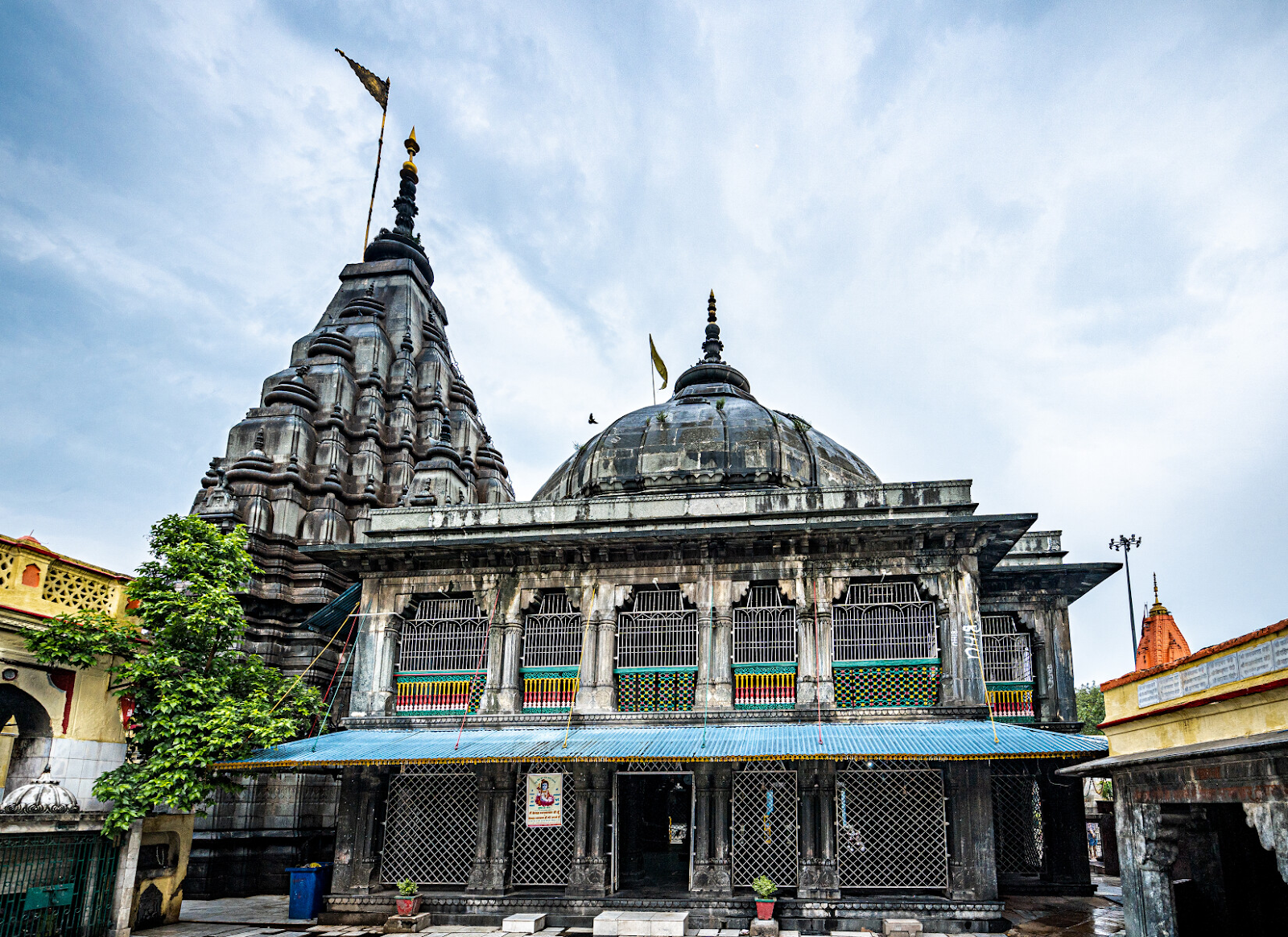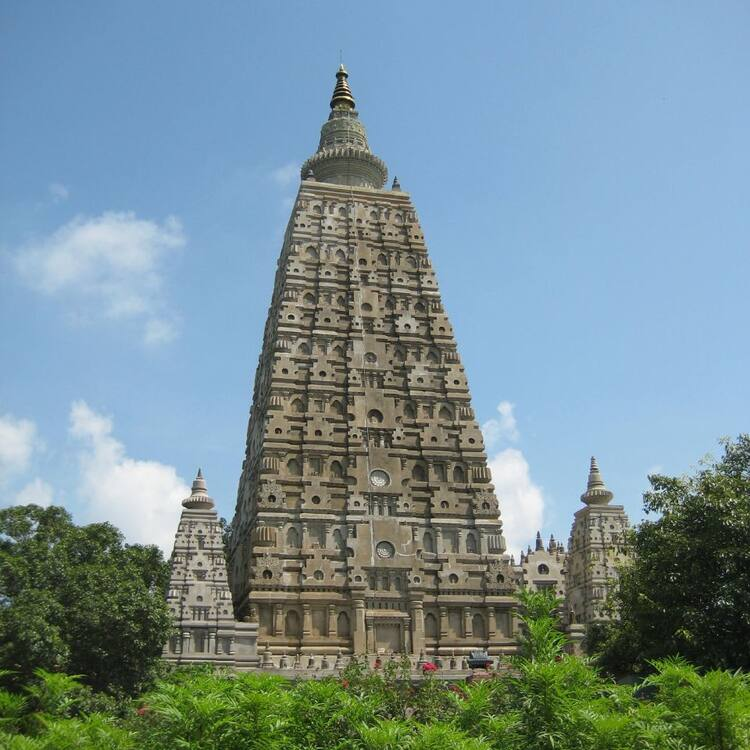Important Facts For Prelims
Corridor Projects for Vishnupad and Mahabodhi Temples
- 18 Sep 2024
- 6 min read
Why in News?
The Union Budget 2024-25 revealed plans to develop corridor projects for the Vishnupad Temple at Gaya and the Mahabodhi Temple at Bodh Gaya in Bihar.
- Modelled after the Kashi Vishwanath Corridor, these projects aim to enhance both temples as major pilgrim and tourist destinations.
- The temples are about 10 kilometres apart and are culturally significant.
What are the Key Facts About Vishnupad Temple and the Mahabodhi Temple?
- Vishnupad Temple at Gaya: It is situated on the banks of the Phalgu/Falgu river in Gaya district of Bihar. The temple is dedicated to Lord Vishnu.
- Legend: According to local mythology, a demon named Gayasur requested the gods to grant him the power to help others attain moksha (liberation from the cycle of rebirth).
- However, after misusing this power, Lord Vishnu subdued him, leaving a footprint in the temple, believed to be a mark of that event.
- Architectural Features: The temple stands about 100 feet tall and features 44 pillars constructed from large gray granite blocks (Munger Black stone) joined with iron clamps.
- The octagonal shrine is oriented towards the east.
- Construction: It was constructed in 1787 under the orders of Queen Ahilyabai Holkar.
- Cultural Practices: The temple is particularly significant during Pitra Paksha, a period dedicated to honoring ancestors, attracting many devotees.
- The Brahma Kalpit Brahmins, also referred to as Gayawal Brahmins, have been the traditional priests of the temple since ancient times.
- Legend: According to local mythology, a demon named Gayasur requested the gods to grant him the power to help others attain moksha (liberation from the cycle of rebirth).
- Mahabodhi Temple at Bodh Gaya: It is believed to be the site where Gautam Buddha attained enlightenment under the Mahabodhi Tree.
- Construction of Temple: The original temple was built by Emperor Ashoka in the 3rd century BC, with the current structure dating back to the 5th–6th centuries.
- Architectural Features: It comprises the 50 m high grand temple (the Vajrasana), sacred Bodhi Tree and other 6 sacred sites of Buddha's enlightenment.
- It is surrounded by numerous ancient Votive stupas, well maintained and protected by inner, middle and outer circular boundaries.
- It is one of the earliest brick temples from the Gupta period, influencing later brick architecture.
- The Vajrasana (the Diamond Throne) was originally installed by Emperor Asoka to mark the spot where Buddha sat and meditated.
- Sacred Sites:
- Bodhi Tree: Believed to be a direct descendant of the tree under which Buddha attained Enlightenment.
- Animeshlochan Chaitya: Where Buddha spent the second week of meditation after attaining enlightenment.
- Ratnachakrama: Site of Buddha's third week after attaining enlightenment.
- Ratnaghar Chaitya: Site of Buddha's fourth week after attaining enlightenment.
- Ajapala Nigrodh Tree: Site of Buddha’s fifth week after attaining enlightenment.
- Lotus Pond: Site of Buddha’s sixth week after attaining enlightenment..
- Rajyatana Tree: Site of Buddha’s seventh week after attaining enlightenment..
- Recognition: It has been a UNESCO World Heritage Site since 2002.
- Pilgrimage Site: The Mahabodhi Temple attracts a large number of national and international pilgrims, highlighting its spiritual significance.
Note
- Other famous tourist places in Bihar are Vishwa Shanti Stupa in Rajgir, Nalanda, Ancient city of Patliputra, Valmiki Nagar Tiger Reserve in the West Champaran, etc,.
What is the Pilgrim Corridor Project (PCP)?
- The Pilgrim Corridor Project (PCP) involves upgrading religious sites into world-class destinations for spiritual and tourism purposes.
- Key Features:
- Boost to Tourism and Economy: The expansion of religious tourism is expected to generate foreign exchange and create jobs, with India's tourism revenue rising by 65.7% year-on-year (Economic Survey 2023-24).
- Preservation and Restoration: Projects like the Kashi Vishwanath Corridor expand and restore temple areas, including smaller temples like Sheetla Mata and Shri Ram Temple.
- Enhanced Visitor Experience: Improvements include reducing congestion, offering virtual tours, and providing amenities such as restrooms, shops, and improved accessibility with escalators and ramps.
Read More: Temple Architecture, Ram Temple
UPSC Civil Services Examination Previous Year Question (PYQ)
Prelims
Q. The Nagara, the Dravida and the Vesara are the (2012)
(a) three main racial groups of the Indian subcontinent
(b) three main linguistic divisions into which the languages of India can be classified
(c) three main styles of Indian temple architecture
(d) three main musical Gharanas prevalent in India
Ans: c






